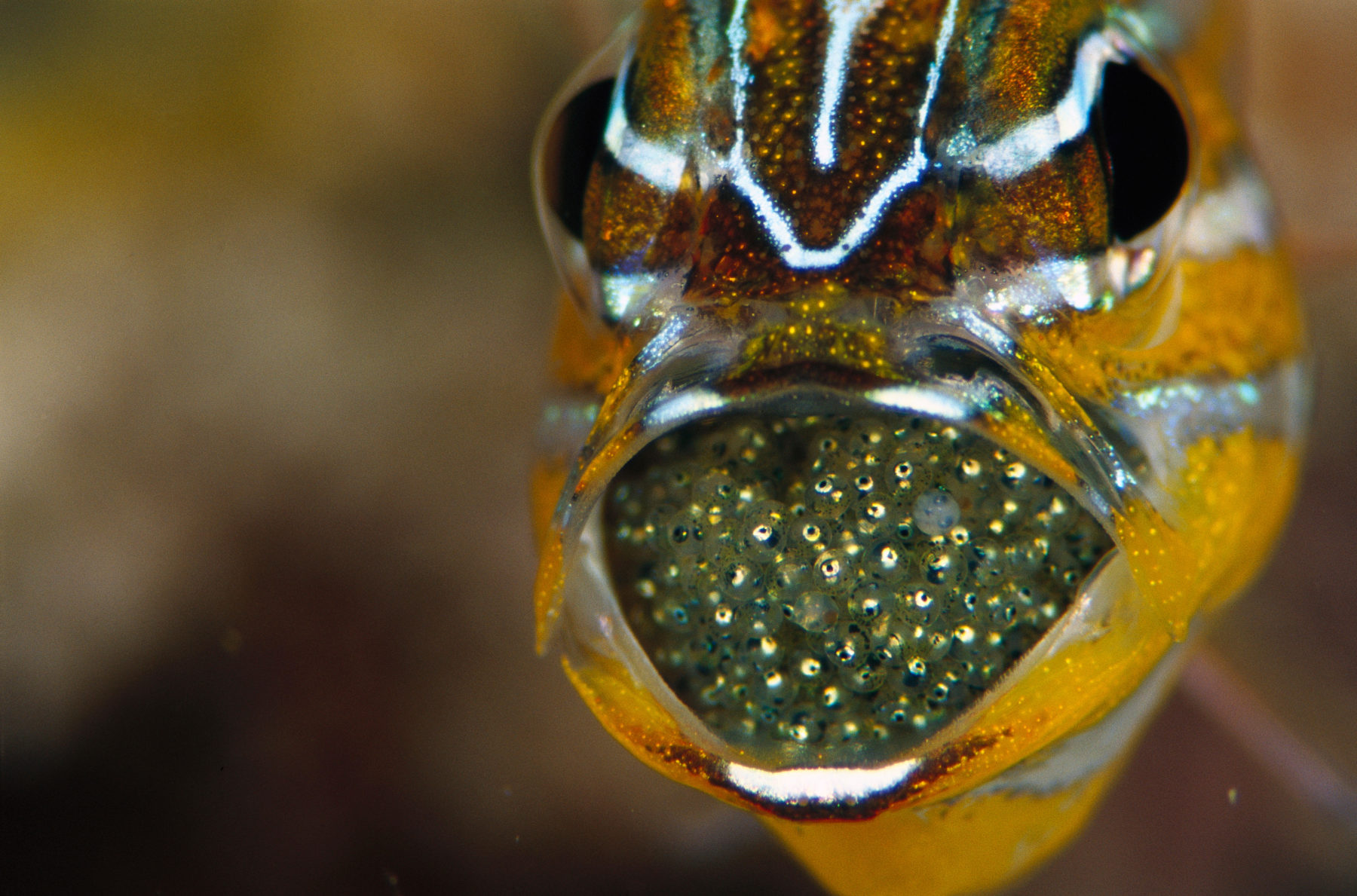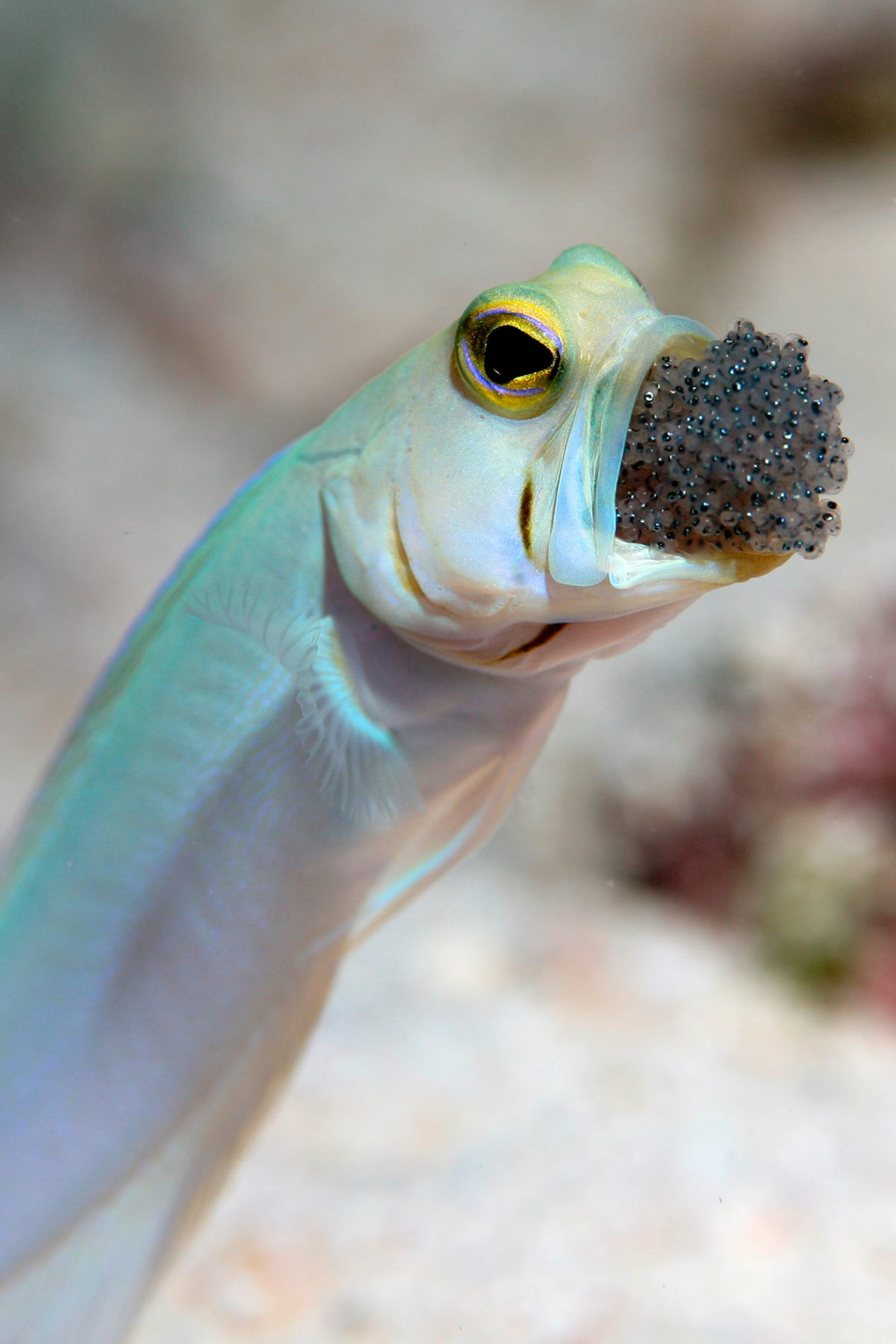Don’t worry, cardinalfish, we didn’t want your eggs anyway

Bec Crew
Bec Crew

With razor-sharp teeth framing its gaping maw, the male tiger cardinalfish (Cheilodipterus macrodon) makes a compelling case for any would-be predators to back off.
This proud papa probably has a mood to match his fearsome visage – while he’s brooding his clutch of eggs, he can’t actually eat anything. Incubating those eggs usually takes up to a month, which, to be honest, sounds pretty hellish.
Male tiger cardinalfish get lumped with this duty of care because they naturally develop longer heads and a larger jaw than the females – all the better to brood lots of babies with.
These eggs are fertilised in the water – the female will lay eggs near the male, who will fertilise them and then take them into his mouth.
Here’s a male yellow-striped cardinalfish (Apogon cyanosoma), photographed in the Solomon Islands, showing off a delicious mouthful:

Image credit: Minden Pictures / Alamy Stock Photo
It’s not a stress-free experience for the females, even if they don’t have brooding responsibilities. The females have to worry about the very real possibility that the male will accidentally (or on purpose) swallow the lot and be done with it. They may also swallow a few eggs, on occasion, just to get through the month.
Fortunately, female cardinalfish have evolved a nifty trick in response to this – they lay yolkless ‘dummy’ eggs alongside the real eggs in the hope that, if the male swallows some eggs, many of them will be dummy eggs.
Tiger and yellow-striped cardinalfish are among several cardinalfish species to display this mouth-brooding technique. Tiger cardinalfish are found throughout the tropical waters of the Indo-Pacific region, including all along the north-west, northern and north-eastern coast of Australia, from Western Australia to Queensland. Yellow-striped cardinalfish are native to the Indo-West Pacific, including around most of the mainland Australian coastline.
Cardinalfish are not the only animals to brood eggs in their mouths. Male jawfish from the family Opistognathidae, found throughout the warmer parts of the Atlantic, Pacific and Indian Oceans, also do it. And as you can see here, they do it with aplomb:

Darwin’s frog (Rhinoderma darwinii), native to the temperate forests of southern Chile and Argentina, is another mouthbrooding species. The male swallows its very young tadpoles and incubates them in his vocal sac until they hatch.
Watch here to see why its nickname is the vomit frog:

